Microsoft Surface Book 3 review: Still relevant?
It looks familiar, because it is: Microsoft's Surface Book 3 is mostly just new under the hood

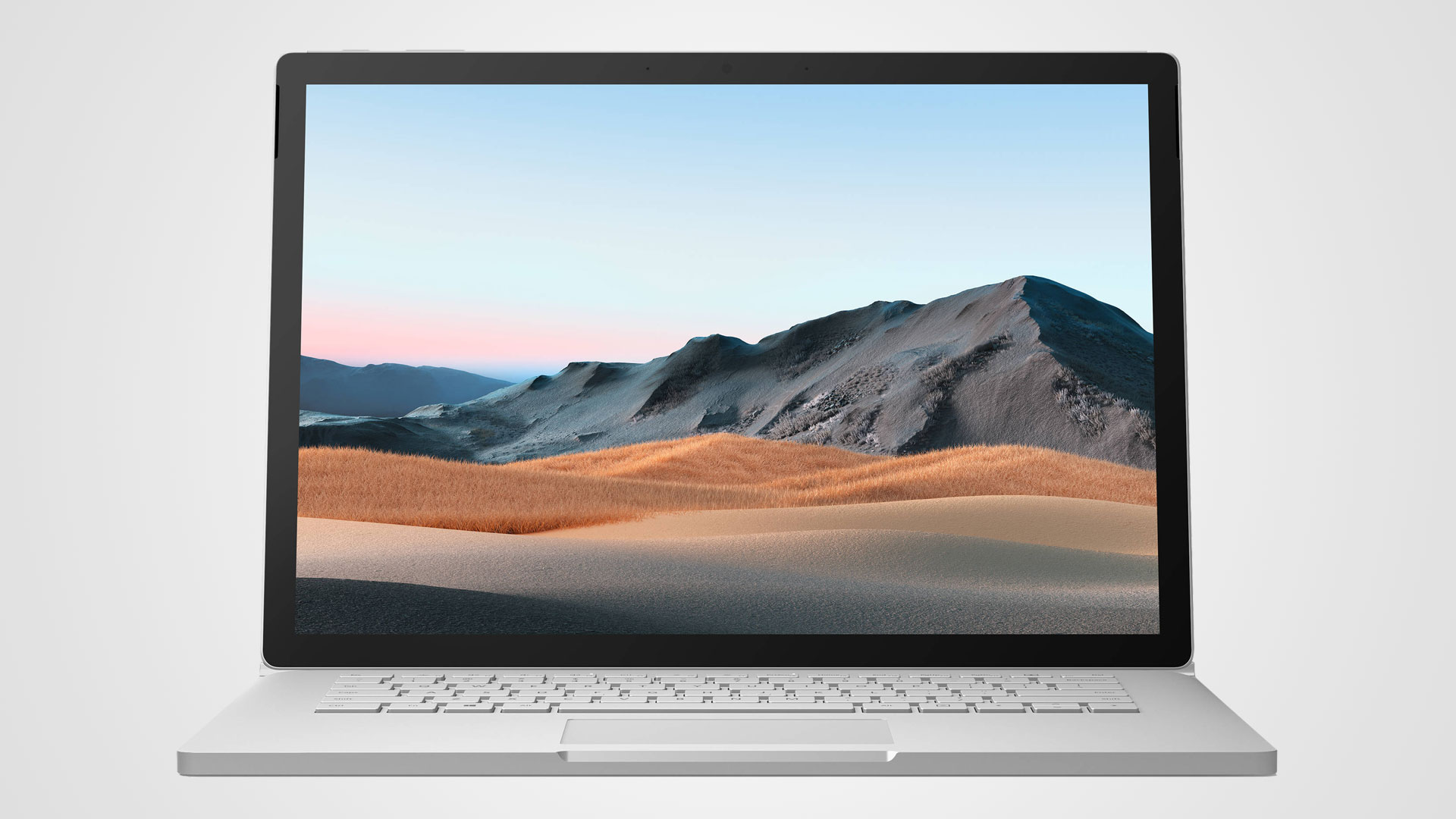
The third-generation of the Microsoft Surface Book 3 remains a stunning physical specimen with world-beating engineering and a unique feature set. However, it's very expensive compared to the conventional laptops that will be a better fit for most user's needs.
-
+
Gorgeous engineering
-
+
Unique feature set
-
+
Fully detachable tablet functionality
-
+
Discrete Nvidia graphics
-
-
Very expensive
-
-
Not especially fast
-
-
Slightly chunky
-
-
Battery life is only adequate
Why you can trust T3
When Microsoft launched the original Surface Book back in 2015 there was nothing quite like it. Fast-forward nearly six years and you get the Microsoft Surface Book 3, which looks physically identical. And there's still nothing quite like it.
Inside, there's been significant change, however, with new processors, upgraded memory and the addition of relatively high-performance graphics too. Is it enough to make the Surface Book 3 one of the best laptops around? Has time forgotten what was once a radical and innovative portable PC with fully detachable tablet functionality and novel engineering? That's what we're here to find out.
It was actually over three years ago that the Surface Book 2 appeared. So, one thing is for sure: Microsoft's update cycle is pretty gentle. But then so is Apple's when it comes to the design of its MacBook laptops. Indeed, the Surface Book shares more than just longevity with Apple's kit. It's also one of the few devices that can compete with Apple for pure build quality. This thing is beautifully put together and one of the best 2-in-1 laptops you can buy.
Now that it has 10th Gen Intel processors, a huge 32GB hunk of RAM and Nvidia graphics, is it also compelling from a performance perspective? Time to find out.
Microsoft Surface Book 3 review: Design
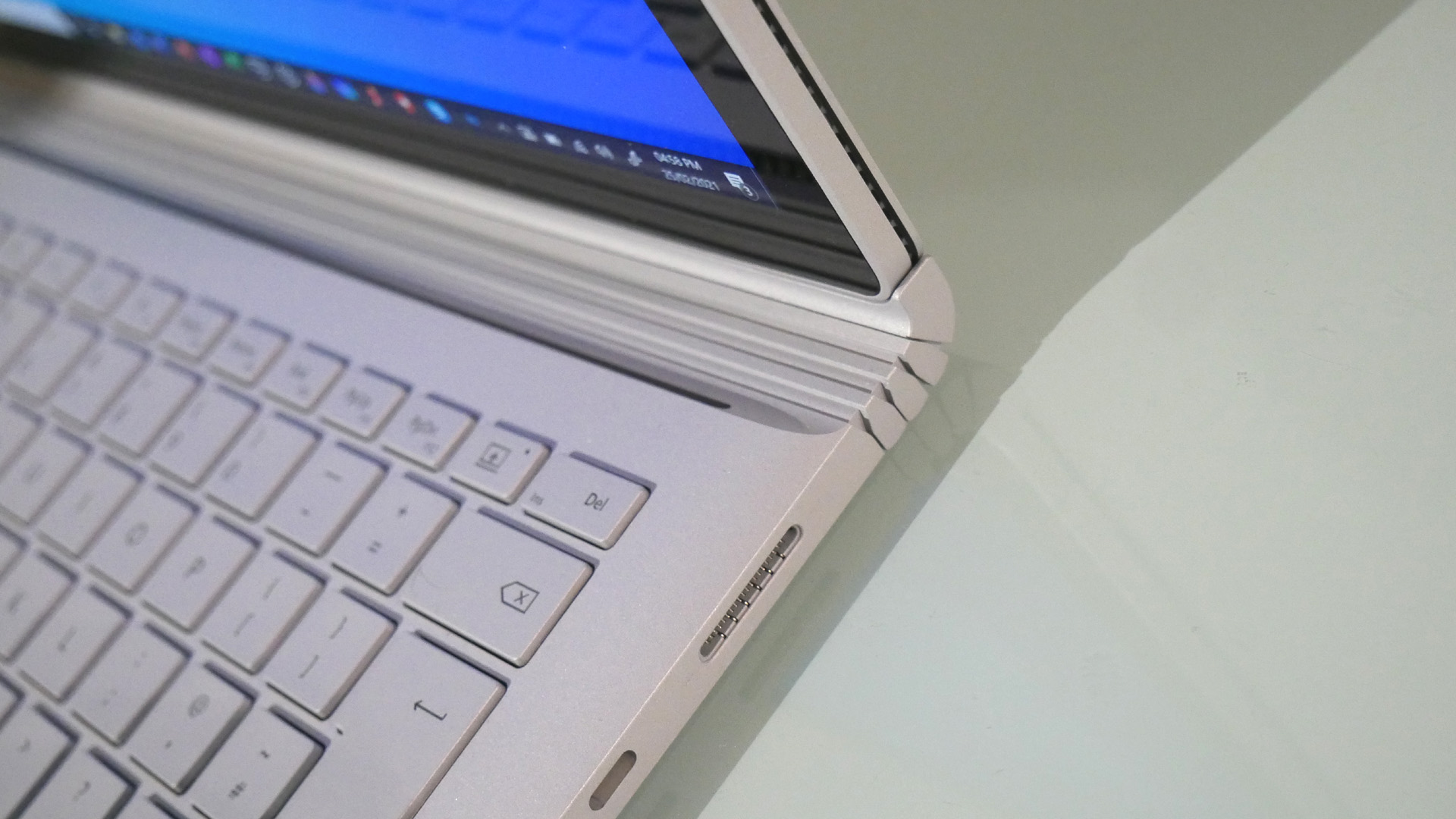
Available in both 13.5-inch and 15-inch form factors, it's the 13.5-inch model we're reviewing here. It's the version that will probably have broader appeal thanks to its more manageable proportions in tablet mode. The 15-inch variant makes for an unusually large tablet.
Speaking of tablet mode, it carries with it all the same implication for design and ergonomics as previous Surface Books. The signature – and beautifully engineered – fulcrum hinge remains, as does the button for releasing the tablet from the keyboard section, though Microsoft has shortened the wait time between when you hit the button and the hinge ‘popping' to release the tablet.
Likewise the tablet functionality still results in fairly large bezels around the screen. Back in 2015, that wasn't a huge design disadvantage. Here in 2021 amidst a craze for ever slimmer bezels, it does rather date the Surface Book 3.
Get all the latest news, reviews, deals and buying guides on gorgeous tech, home and active products from the T3 experts
Nevertheless, this remains one of the very best built tablets, laptops or 2-in-1 devices on the market, with gorgeous magnesium casing and a very high quality overall feel. The fulcrum hinge is a design marvel, the keyboard bed is extremely solid and the glass-topped trackpad very precise, even if it's now looking a little small by modern standards.
There's also no denying that the heavy duty engineering results in quite a chunky device, something that's not helped by the fact the otherwise clever fulcrum hinge leaves a fair old gap between the tablet and the keyboard slab at the hinge end.
As a tablet, even this 13.5-inch model is likewise pretty hefty. All of which is fine, save for the fact that detachable tablet aspect forces the use of low-power CPUs, resulting in something of a mismatch between proportions and performance, more on which in a moment.
Microsoft Surface Book 3 review: Features
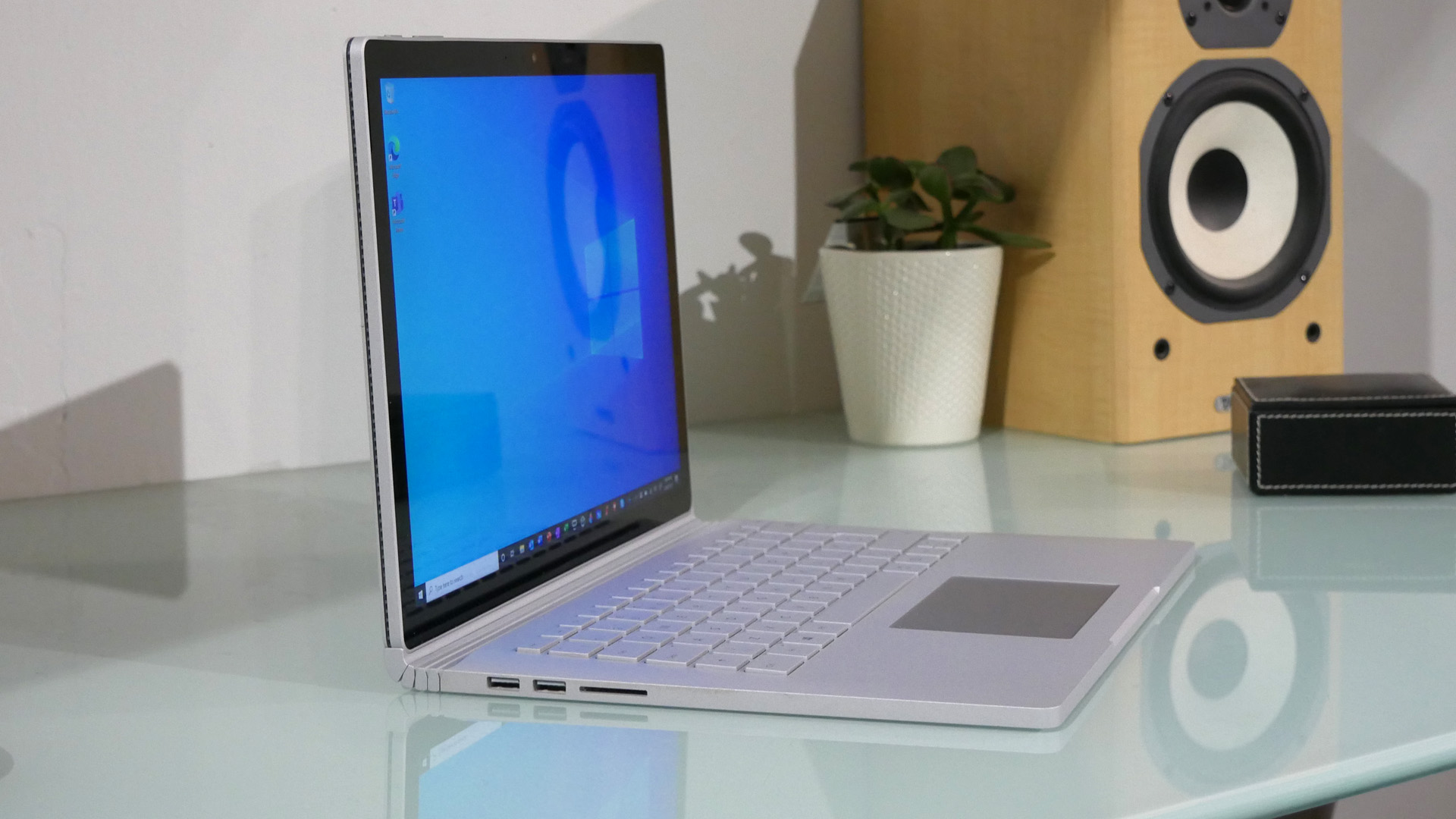
Like all previous Microsoft Surface Book 13.5-inch models, the Surface Book 3 13.5 is based around a capacitive IPS touchscreen with 3,000 by 2,000 pixels and thus a squarer-than-usual 3:2 aspect ratio.
What is new, or at least new for the Surface Book 3, is the 10th Gen Intel processor, in this case an Intel Core i7-1065G7. It's a quad-core chip with a 1.3GHz baseclock and 3.9GHz maximum single-core boost frequency. It's a chip primarily built for efficiency rather than peak performance, but with four proper Intel cores, on paper it should be able to cope with serious computing tasks rather than only being good for light web browsing and watching video.
The Core i7-1065G7 has also already been replaced by Intel's 11th Gen Tiger Lake chips, which reflects the Surface Book 3's May 2020 launch date and the fact that Microsoft tends to update Surface products on a pretty gentle schedule. Alongside the Intel processor is fully 32GB of system memory and a 512GB NVMe SSD from SK Hynix, so there's a solid foundation for all kinds of computing, including intensive multitasking.
Microsoft is also bigging up the gaming potential of this latest Surface Book model. The 15-inch model can be had with an Nvidia GeForce GTX 1660 Ti graphics chip. However, this 13.5-inch version tops out with a GTX 1650 GPU with 4GB of video memory. In both cases, the GPU is located in the keyboard slab.
Connectivity wise, like Surface Book 2 the third-gen model has a single USB-C port. It doesn't support Thunderbolt 3. But it can be used to charge the Surface Book 3 and supports DisplayPort 1.4 video output, creating a wide range of display connectivity options.
Of course, you can also optionally grab the Surface Dock 2, which supports fast charging, has four USB-C ports, two USB-A sockets, ethernet and can drive two 4K monitors at 60Hz. Be warned, it's pretty pricey at £259 or $259 RRP, though latterly it's been available for £195 in the UK and $169 Stateside.
Rounding out the main features are a 5MP front facing webcam, an 8MP rear facing camera and upgraded far-field microphones. Oh, and the same inking support as the Surface Book 2. So, that's 4,096 levels of pressure, claimed 21 millisecond latency and support for Microsoft's Surface Pen, which is available separately.
Microsoft Surface Book 3 review: Performance
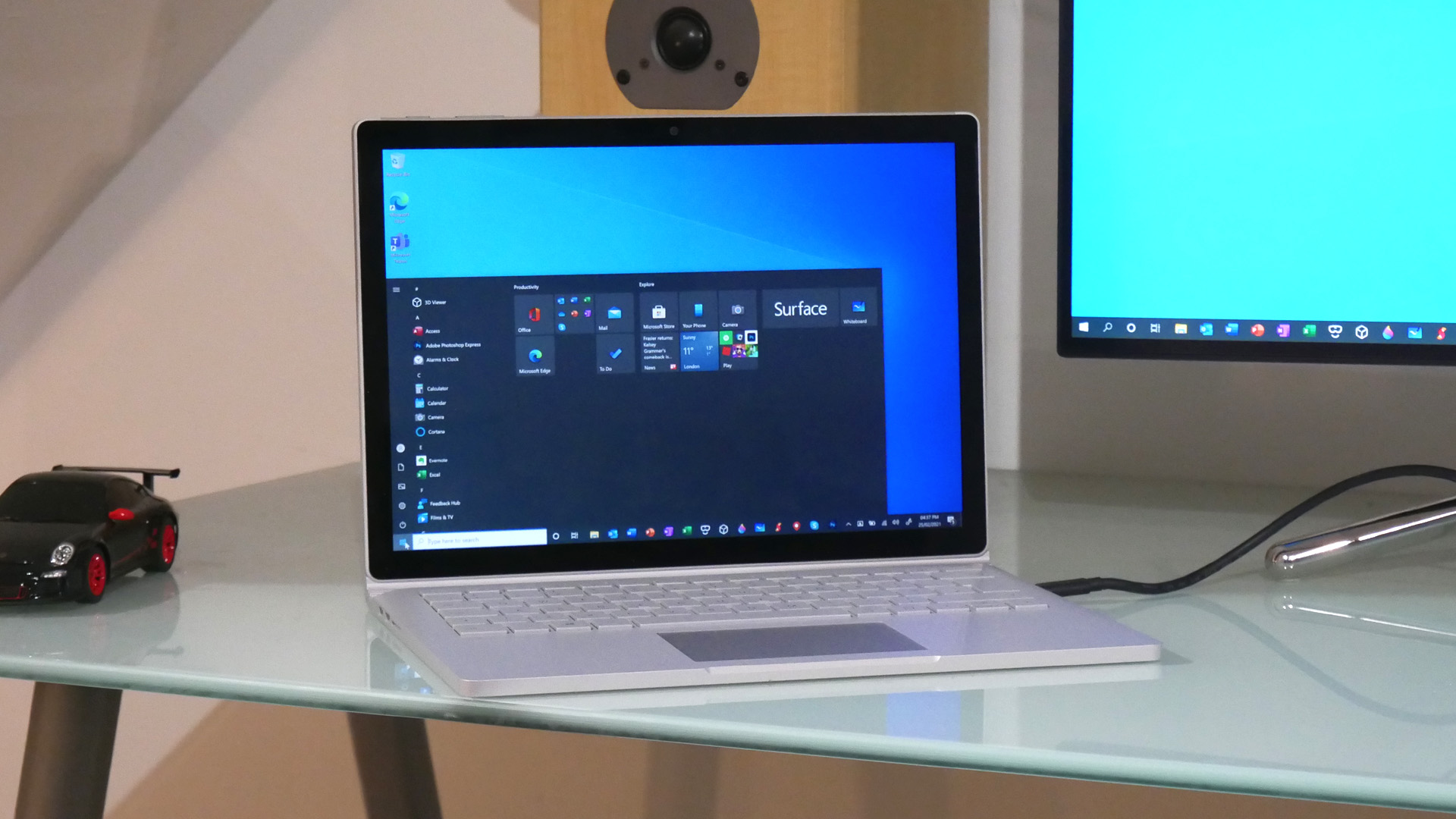
The Intel Core i7-1065G7 quad-core CPU is a known quantity and performs very much in line with expectations fitted to the Surface Book 3. It's a strong all-round performer with particularly good single-core performance, which makes for a snappy-feeling experience in Windows.
However, it's a long way off the fastest mobile CPUs, like AMD's Ryzen 5000 series chips, for multi-threaded throughput. As a content creation device, therefore, the Surface Book 3 is a bit of a mixed bag. CPU performance is only adequate, but it is augmented by a reasonable graphics chip, which comes in handy for applications that support GPU acceleration, such as certain workflows and filters in the Adobe suite.
While we're talking graphics, the Nvidia GeForce GTX 1650 graphics is good for a little light gaming. If, say, you're a Fortnite addict and want to keep your hand in while travelling, it'll get the job done. But don't expect to run Cyberpunk 2077 with all the graphical bells and whistles in full visual symphony. It simply doesn't have the grunt for that, not even close.
That said, the 32GB of RAM ensures that the Surface Book 3 as configured here is a true multitasking beast. You can open browser tabs with abandon without any fear of running out of memory. The 512GB NVMe SSD is good for 2GB/s read speeds and around 780MB/s writes. That's not exactly cutting edge, but again it will be plenty for most users.
But what of that 13.5-inch touchscreen? Back in 2015, it was a pretty impressive panel, with its 3,000 by 2,000 pixel resolution and accurate IPS-drive colours. Subjectively, it doesn't seem to have moved on a great deal since and is now a decent rather than remarkable panel. It's not as punchy or contrasty as the best laptop screens today.
Inking input is obviously another aspect of the Surface Book 3's screen. As before, it's slick, precise and satisfying, if subjectively a little laggier than the claimed 21 millisecond response would have you expect.
As for audio quality, the Surface Book 3's integrated speakers are above average, but won't scare a Macbook or iPad for dynamic range. The front-facing webcam, meanwhile, is likewise slightly better than the norm for a laptop, but still pretty disappointing when you consider that most smartphones offer superior selfie cams.
Finally, thanks to dual batteries, one in the tablet section and one in the keyboard slab, Microsoft claims up to 15 and a half hours of battery life. Quite how that is achieved isn't clear. In our testing with the screen at two thirds brightness while looping high quality 1080p video, it lasts around eight hours. That's decent, but well behind what the best conventional laptops with otherwise similar specifications can achieve.
Microsoft Surface Book 3 review: Verdict
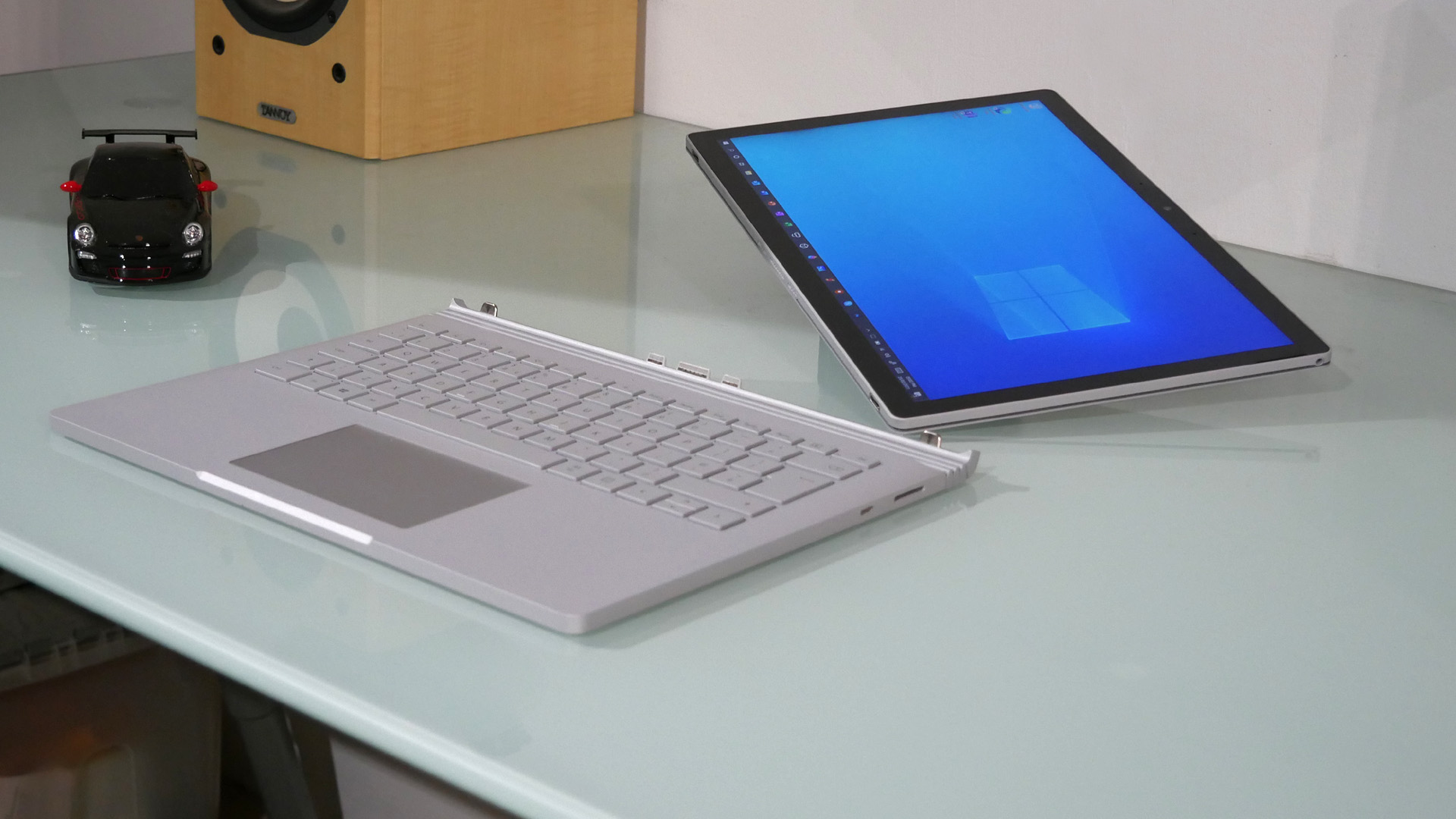
In many ways, the Surface Book 3 still defies easy categorisation and straightforward comparisons. That's true years on from its original launch and despite the fact that its design has barely changed.
It remains one of the best built portable PCs on the market and offers a unique set of features, including the combination of full tablet functionality, plus discrete graphics, an unusual form factor and compatibility with various Microsoft Surface peripherals, including the Surface Pen.
If it maps well with your workflows, especially if you value true tablet functionality and pen input highly, then there probably isn't anything that comes close. For everyone else, it's rather expensive and compromised. Prices have come down recently though, which may help your buying decision.